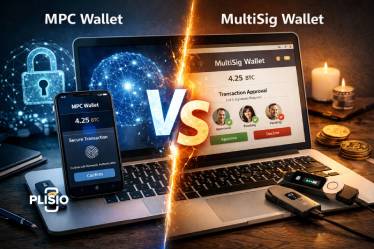Tether (USDT)

Tether (USDT) holds the distinction of being the largest stablecoin by market capitalization in the cryptocurrency world. Its primary function is to provide a stable bridge for transactions between various cryptocurrencies and traditional fiat currencies. Established by iFinex, a Hong Kong-registered company that also owns the crypto exchange BitFinex, Tether was initially introduced as RealCoin in July 2014 and later rebranded as Tether in November of the same year. This stablecoin is uniquely pegged to the U.S. dollar and is touted to be backed "100% by Tether's reserves," as stated on its official website.
Originally built on the Bitcoin blockchain, Tether has expanded its compatibility and now operates on various protocols, including Bitcoin's Omni and Liquid protocols, Ethereum, TRON, EOS, Algorand, Solana, and Bitcoin Cash (SLP) blockchains. Notably, as of January 2023, Tether claimed the third position in the cryptocurrency hierarchy, trailing only Bitcoin (BTC) and Ethereum (ETH) in terms of market capitalization. With a market cap nearing $68 billion, Tether's USDT played a pivotal role in many high-value exchanges throughout 2022, solidifying its status as the premier stablecoin choice for traders and investors alike. This stability, coupled with its broad adoption, positions Tether as a crucial component within the ever-evolving crypto landscape.
As of Q1 2025, Tether's market capitalization exceeds $104 billion, according to CoinMarketCap data, reaffirming its status as the dominant stablecoin. On average, over $85 billion worth of USDT is transacted monthly, making it the most traded digital asset by volume, even surpassing Bitcoin and Ethereum combined.
This stability, coupled with its broad adoption, positions Tether as a crucial component within the ever-evolving crypto landscape.
Expert Insight: "Tether remains a cornerstone in digital asset liquidity," says Laura Shin, crypto journalist and host of Unchained. "Despite concerns about transparency, its role as a transactional bridge is unmatched, especially in emerging markets where volatility is high."
According to crypto economist Dr. Evan Cheng, "In 2025, Tether’s dominance reflects not just technical integration, but deep-rooted trust in its usability. It’s more than a stablecoin — it’s become the digital dollar for most on-chain transactions."

What Is A Stablecoin?
Stablecoins, such as Tether, offer a digital asset characterized by minimal volatility, typically maintaining a consistent valuation. These stablecoins are anchored to steady assets like gold, the U.S. dollar, or other fiat currencies, ensuring that the coin's value strives to remain equivalent to its peg.
"The fundamental concept is that 1 Tether is always exchangeable for $1, regardless of the prevailing market conditions," explains Steve Bumbera, co-founder and principal developer of Many Worlds Token.
As of now, Tether stands as the largest stablecoin, contributing to approximately 53% of the total market capitalization of stablecoins. The second-largest stablecoin, USD Coin (USDC), commands around 31% of the market share, closely followed by Binance USD (BUSD).
The significance of stablecoins like Tether in the crypto sphere lies in their role in furnishing unwavering and dependable liquidity for navigating in and out of cryptocurrency trades. This liquidity provision shields traders from unforeseeable losses triggered by the erratic price fluctuations synonymous with the crypto market. This stability and predictability amplify the allure of stablecoins among traders and investors alike.
How Does Tether Work?
The stability inherent in Tether finds its origins in its robust reserve structure. The company asserts that it possesses dollars and other assets equivalent to or surpassing the total count of USDT tokens in circulation. Essentially, for each Tether token released into circulation, the company asserts its ownership of one dollar within its reserves, denominated either in liquid currency or akin to assets like short-term bonds and time deposits.
Tether maintains a transparent stance by regularly disclosing its reserve quantities versus the outstanding USDT tokens on its official website. Nevertheless, inquiries and disputes have emerged around Tether's reserve holdings, with scrutiny from regulatory bodies such as the Commodity Futures Trading Commission (CFTC) and the New York Attorney General focused on the company's reserve practices.
Interested investors can seamlessly acquire Tether across major cryptocurrency exchanges. When a $100 investment is directed towards Tether, roughly 100 USDT tokens are conferred, concurrently augmenting the company's reserves by $100 to uphold the essential 1-to-1 dollar peg. The Tether tokens are effectively withdrawn from circulation and eliminated when users choose to exchange them for traditional fiat currency.
Unlike possessing its own autonomous blockchain, Tether instead issues its tokens via various third-party blockchain networks. The current hosts for USDT tokens include:
- Ethereum – USDT ERC-20
- Tron – USDT TRC-20
- Binance Smart Chain – USDT BEP-20
- Solana – USDT SPL
- TON (The Open Network) – USDT TON
This broad multichain support enhances the utility and accessibility of USDT across different ecosystems. Whether it's fast and low-cost transactions on Solana, deep DeFi integration on Ethereum, or expanding adoption within Telegram-based applications via TON, Tether continues to adapt and integrate wherever liquidity is needed.
The dynamic interplay of Tether's collateralized reserves and its strategic token issuance on these diverse blockchains underscores its pivotal role as a stabilizing force in the global cryptocurrency landscape.
Real-World Use Cases and User Experiences
Tether is not just a financial instrument for institutions and traders — it’s increasingly part of real-world commerce, especially in regions where local currencies face inflation or where access to U.S. dollars is limited.
Cross-border freelancers: Independent workers in countries like Argentina, Nigeria, and Turkey use Tether to receive payments from international clients. Platforms such as Deel and local peer-to-peer (P2P) marketplaces allow freelancers to accept USDT and convert it into local currency when rates are favorable.
“I get paid in USDT and convert to pesos only when the exchange rate benefits me,” shares Luis, a freelance graphic designer from Buenos Aires. “It gives me more control and protects me from inflation.”
eCommerce stores: Online retailers are increasingly accepting Tether for goods ranging from electronics to apparel. One electronics vendor in Eastern Europe reported that USDT now accounts for 40% of their international sales volume.
Remittances: USDT is widely used in remittance corridors across Asia and Africa. Unlike traditional wire transfers, which can take days and involve high fees, sending USDT via a crypto wallet often takes just minutes and costs a fraction.
“My brother sends me USDT from Dubai every month,” says Amina, a university student in Kenya. “I receive it on my phone and use local exchanges to convert it to Kenyan Shillings. It’s cheaper and faster than bank transfers.”
Crypto-savvy businesses: Companies integrating Plisio’s crypto payment gateway use USDT to stabilize revenue during market fluctuations. By converting unstable coins into Tether, businesses can maintain liquidity without relying on traditional banks.
Everyday users: Some users treat Tether as a digital dollar savings account. With the help of mobile crypto wallets, they store USDT and withdraw only as needed, especially in regions with limited banking infrastructure.
“USDT is like my emergency fund,” explains Rashid, a delivery driver in Pakistan. “I keep some on my phone so I can access money anytime, even if the banks are closed.”
These real-life examples illustrate how Tether isn’t just a tool for traders — it's increasingly embedded in the financial lives of ordinary people, offering flexibility, stability, and global accessibility.
Tether History
The history of Tether dates back a decade, originating from the innovative ideas of J.R. Willet. Willet's exploration of building new cryptocurrencies using the Bitcoin protocol culminated in the inception of Mastercoin, where one of its early members eventually co-founded Tether in 2014.
Tether swiftly gained traction as a vehicle for liquidity when it became integrated into the BitFinex exchange in January 2015. However, the journey hasn't been without challenges. In November 2017, Tether reported a theft of $31 million worth of USDT tokens, a situation that led to a subsequent hard fork.
As Tether aimed to stabilize its value through a 1-to-1 peg to the U.S. dollar, it encountered scrutiny regarding its reserves. These questions coincided with the company facing difficulties accessing banking services.
Notably, in April 2019, the New York Attorney General obtained a court order against Tether and BitFinex parent company iFinex. This order followed an investigation that revealed BitFinex's borrowing of around $700 million from Tether's reserves to address frozen funds linked to its Panamanian banking partner Crypto Capital Corp. The situation raised concerns about the company's financial practices.
In the years that followed, Tether navigated legal complexities. By February 2021, Tether and BitFinex reached settlements, involving fines and commitments to share information about their reserves with regulatory bodies.
Further developments arose in October 2021 when the U.S. Commodity Futures Trading Commission (CFTC) announced Tether's agreement to pay a substantial fine due to discrepancies in reserve backing. Tether's stability was tested in May 2022 when the value briefly declined, attributed to the collapse of another stablecoin issuer's value. Tether, however, swiftly rebounded, adhering to its commitment to honor redemption requests in alignment with its peg.
In its efforts to broaden its reach, Tether expanded its offerings to include stablecoins backed by other fiat currencies, such as the Mexican peso, while continuing its presence on various blockchains.
Through its journey, Tether remains a significant presence in the cryptocurrency space, characterized by both accomplishments and challenges that have shaped its role within the broader digital asset landscape.
How Is Tether Useful?
Stablecoins continue to be a favored preference among cryptocurrency traders, with Tether having navigated through controversies concerning liquidity and the sufficiency of its reserves.
As recently as 2022, the company's disclosures regarding its reserves remained somewhat opaque. Tether's website, at one juncture, offered minimal elucidation, merely stating that "All Tether tokens maintain a 1-to-1 relationship with a corresponding fiat currency and are fully backed by Tether's reserves."
Adam Carlton, CEO of Pink Panda, a crypto wallet provider, highlights that Tether's historical transparency regarding its backing has encountered periods of obscurity and inconsistency.
"The coin's past is marked by legal uncertainties, and even presently, the visibility into its actual reserves remains unclear and is believed to substantially comprise unidentified origins of commercial paper," Carlton observes.
Other cryptocurrency experts acknowledge that there is a certain level of acknowledgment within the crypto sphere that Tether might not possess full collateralization.
"The market has grappled with this notion of the extent to which they are comfortable; it's widely recognized that Tether isn't tethered solely to dollars," notes James Putra, Vice President of Product Strategy at TradeStation Crypto.
What is USDT payment?
USDT payment refers to making a payment using the cryptocurrency Tether (USDT). Using USDT for payments allows individuals and businesses to transact in a digital currency that is designed to maintain a consistent value similar to the U.S. dollar. This can help mitigate the volatility often associated with other cryptocurrencies like Bitcoin or Ethereum. USDT payments can be made for various goods and services, including online purchases, remittances, investments, and more. The appeal of USDT payments lies in their potential to combine the benefits of cryptocurrencies (such as fast and borderless transactions) with the relative stability of traditional fiat currencies.
How does Tether payment work?
If you're considering enabling Tether transactions for your business, you'll first require a Plisio cryptocurrency merchant wallet with support for USDT.
To facilitate Tether transactions from your customers, integrating a cryptocurrency payment gateway into your website, platform, or application becomes imperative. A notable option, such as Plisio, offers the ability to generate multiple invoices and effectively manage an array of corporate transactions within various wallets.
Upon receipt of Tether payments, you're presented with a choice: retain the received USDT in the relevant wallet or opt to convert it into an alternate currency. Numerous exchanges and online wallets furnish the possibility to convert Tether into diverse cryptocurrencies or traditional fiat currencies like US dollars, euros, or pounds. This flexibility underscores the adaptability of Tether as both a means of transaction and a potential asset diversification strategy.
As you navigate the realm of Tether payments for your business, it's advisable to prioritize secure and trusted wallets, seamless integration of payment gateways, and an understanding of the potential conversion options available to you.
Tether vs. Bitcoin
As stated by Daniel Rodriguez, the Chief Operating Officer at Hill Wealth Strategies, a notable distinction between TetherUSD and Bitcoin lies in their anchoring principles. Tether finds its foundation in a non-cryptocurrency asset, namely the U.S. dollar. Conversely, Bitcoin derives its value solely from the dynamics of supply and demand for BTC.
Moreover, Tether operates as a centralized cryptocurrency, while Bitcoin operates in a decentralized manner. This inherent contrast contributes to Tether's perceived stability when juxtaposed with Bitcoin.
Cryptocurrencies that lack ties to real-world assets or currencies remain susceptible to market volatility. Conventional cryptocurrencies like Ethereum and Litecoin (LTC) are known for experiencing significant oscillations in response to market fluctuations, inflation, and shifts in interest rates.
Rodriguez elaborates, noting that Tether exhibits a relatively higher level of stability due to its propensity to closely shadow the value of one U.S. dollar, with minor variations. He clarifies that Tether isn't primarily designed for profit generation; rather, it strives to serve as a dependable repository of value.
In summary, Rodriguez's insights underscore the contrasting mechanisms driving Tether and Bitcoin, highlighting the former's endeavor for stability and its association with the U.S. dollar, in contrast to the decentralized, market-driven nature of Bitcoin.
Is Tether a Good Investment?
Stablecoins such as Tether don't align with the traditional concept of investment, as their purpose is not to accrue value. Instead, they function as a repository of value, ensuring that the value of one USDT coin consistently equates to one U.S. dollar.
Beyond their role as a reliable store of value, Tether serves as an invaluable tool for conducting business with greater simplicity compared to Bitcoin.
The intrinsic nature of Bitcoin, characterized by its price fluctuations, creates complexities for businesses attempting to establish pricing structures. According to Bumbera, "The value of one Bitcoin today might significantly differ from its value tomorrow, making the establishment of pricing frameworks centered solely around BTC remarkably challenging."
One notable rationale for holding a stablecoin like USDT, as suggested by Bumbera, is the desire to engage with the crypto space while circumventing volatility. Nonetheless, even when tethered to the U.S. dollar, the safety of Terra as an investment remains uncertain.
Bumbera adds a cautionary note, highlighting the potential risks such as Tether's devaluation or the use of an illegitimate staking platform.
While Tether asserts an unblemished track record in honoring redemption requests from verified customers, it's essential to recognize that no guarantees exist in the realm of investments or cryptocurrencies.
Furthermore, cryptocurrency enthusiasts should remain attentive to the evolving regulatory framework governing digital assets. As LoPresti emphasizes, the trajectory of Tether and other stablecoins hinges on transparency, the adequacy of collateral, and liquidity. Regulators are likely to direct their scrutiny toward these aspects of the digital asset economy, especially in the aftermath of the TerraUSD collapse.
In conclusion, the dynamics of stablecoins like Tether encompass their distinct role as value repositories, offering an alternative to the investment objectives commonly associated with traditional cryptocurrencies.
Tether finds its primary utility in facilitating the conversion of cryptocurrencies into fiat currencies, a measure employed to mitigate the risk of slippage, which involves the depreciation in value that can occur between the commencement and completion of a transaction. Nonetheless, instances emerge when Tether's alignment with the designated fiat currency peg isn't consistently maintained. An illustrative incident unfolded when the FTX exchange encountered a collapse in November 2022. During this period, Tether underwent a drastic drop, descending to an approximate value of $0.995. However, Tether's resilience was evident as it swiftly rebounded, at times even surpassing the anticipated 1-to-1 peg.
In 2025, the average daily trading volume of Tether surpasses $110 billion, reflecting its widespread use in both retail and institutional crypto transactions. Over 70% of all stablecoin settlements globally are now conducted via USDT, consolidating its role as the de facto digital dollar on blockchain networks.
This episode exemplifies the nuanced dynamics that can impact the stability and alignment of Tether with its pegged fiat currency during exceptional market conditions.
Where can I learn more?
Visit the official Tether FAQ page or explore trusted crypto news outlets.



